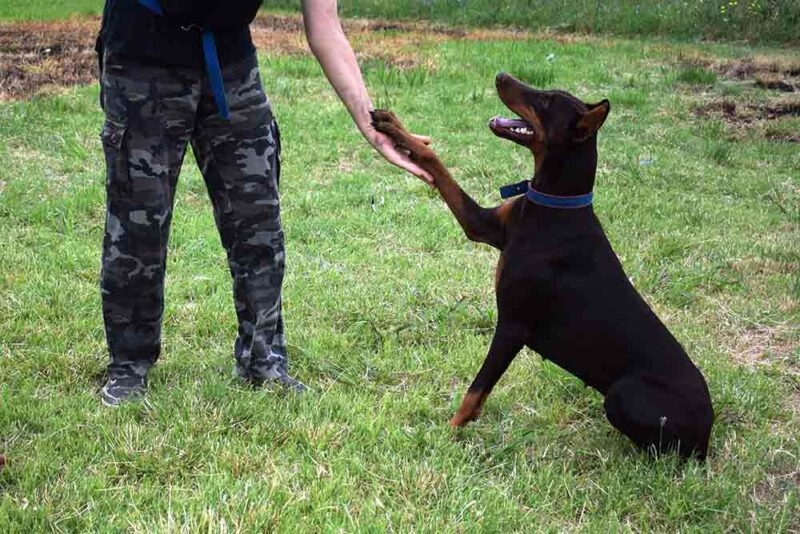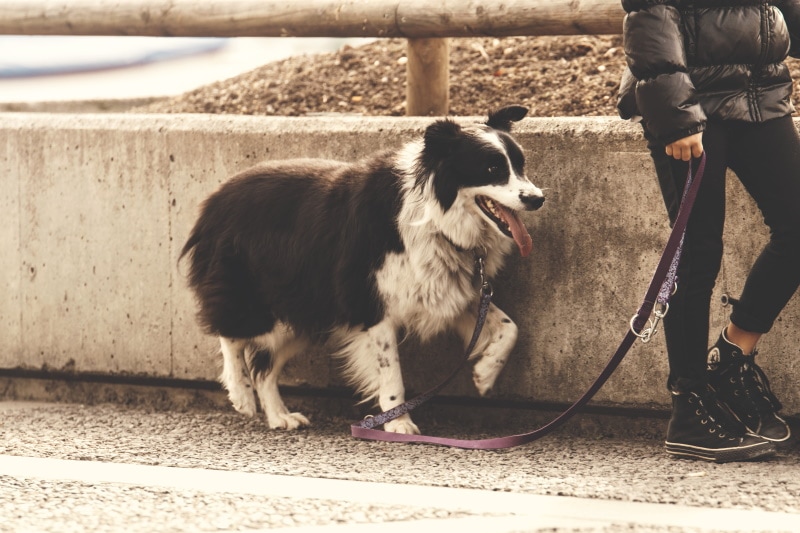Can Dogs Fake Injuries? What The Experts Say
By Grant Piper
Updated on

It will happen to most dog owners at one time or another. Your dog comes up to you with what looks to be a pretty serious limp. However, at the first sign of the leash or their favorite toy, the limp seems to go away magically, and your dog looks right as rain again. What gives? Is your dog faking an injury, or do they just get over pain remarkably quickly? Can dogs even fake injuries? These are interesting questions that have become somewhat contentious in the world of dog health. Some people say that dogs can absolutely fake injuries for attention, while other people say that there is no way dogs are faking any type of pain. There are a number of committed dog owners, breeders, and even veterinarians that claim that dogs are fully capable of faking injuries.
Here is what experts say about the question and how both sides see the answer.
Some Experts Say Yes, Dogs Can Fake Injuries
They cite anecdotal evidence and behavioral trends. Dogs are masters at getting attention from humans. They know how they should act to get attention, get affirmation, and get what they want. Faking an injury is another tool in this toolbox. If limping makes a person run over and dote on a dog, some people say that dogs will act sad or hurt in order to garner additional attention from their owners.
Limping is the most common form of fake injury and, indeed, is hypothesized to be one of the only injuries a dog can effectively fake. A dog will appear to limp when they are craving more human attention, even if they are not in any pain. Anecdotally, some dogs appear to limp and then will completely forget about their limp when it is time for a treat or to go on a walk leading some to believe that a limp is a put-on act for sympathy or affection.
There are no official journal studies that have dived into this type of behavior, so there is no official word on whether these observations are based on fact or not.

Other Experts Say No, Dogs Cannot Fake an Injury
Other experts say that dogs cannot fake an injury for the simple reason that doing so requires complex multiple level thinking that dogs simply do not possess. A lot more goes into faking an injury than most people realize. First, a dog has to be healthy and in no actual pain. Second, a dog has to think about a goal that it wants, like affection or attention. Then, the dog has to decide to act in a way that is not natural, i.e., by limping, in order to achieve its goal. Lastly, the dog has to continue the behavior until the goal is achieved.
For humans, that type of thinking process is easy and natural, but for dogs, it is actually quite burdensome. This has led many vets to say that dogs do not fake any injuries and that the behaviors seen by owners or other veterinarians are simply misinterpreted as fake injuries.

Dogs Don’t Know Exactly How to Fake an Injury
Even if you suspect that a dog is limping in order to get attention, they don’t really know what they are doing. Dogs do not know that limping is faking an injury. To them, it is just another behavior like begging, licking, or whining that can get them what they want. For this reason, it is naive to assume that dogs are imagining gruesome injuries for themselves and acting them out. They are simply reacting in a way that will help get them what they want. They do not realize that what they are doing is akin to faking an injury, at least not on any deep level of understanding. Faking an injury is a human behavior that requires planning, forethought, and some sort of intent that dogs just aren’t capable of achieving.
A Learned Behavior
What experts on both sides of the issue agree on is that if a dog is limping without any pain, it is a learned behavior. Dogs will not go around limping when they are not in pain for no reason. A dog must learn this type of behavior. That means that a dog likely had a real limp at one time and learned that walking in a certain way makes people give them more time, attention, and affection.
The debate is still out on whether dogs do this to expressly fake an injury or are actually just injured, even if the injury is only minor. Dogs will not do this kind of behavior in a vacuum, and wild dogs would never be caught faking an injury. In fact, in the wild, dogs do the opposite. They hide injuries and act healthy when they might not otherwise be in order to deter predators and prevent being left out of the pack due to an ailment.

Don’t Assume a Dog Is Faking
One of the worst things you can do is assume that your dog is faking an injury. If you see your dog limping and then do not see them limping, you can’t assume that your dog isn’t actually hurt. In fact, showing signs of injury is bad in the wild, and many dogs will do everything in their power to hide any pain or ailments as a natural response. Your dog might be trying to hide actual pain, or they might be showing a higher level of pain tolerance than you assume.
You should check your dog for any signs of injury or pain if you see them limping or acting injured. If you suspect that your dog is in actual pain, you should consider consulting with your veterinarian to see if they need to come in for a check-up. You do not want to laugh it off and claim your dog is faking an injury when they are actually in pain.

Verdict
Since there are no peer-reviewed journal studies on the topic, there is no hard consensus about whether dogs can fake injuries. Some sources will say yes, absolutely. Dogs put on fake limps to get things out of people all of the time. Other vets say not so fast. Opponents of this idea claim that faking an injury requires a deep level of thinking and problem solving that dogs simply don’t have. Faking an injury is not natural or instinctive dog behavior, so it is some kind of learned behavior.
In either case, if you see your dog limping, you should not ignore it. Examine them for signs of injury or pain and consider consulting with your veterinarian. It is more likely that your dog is actually sore than faking an injury.
Featured Image Credit: Derkachev Artem, Shutterstock












